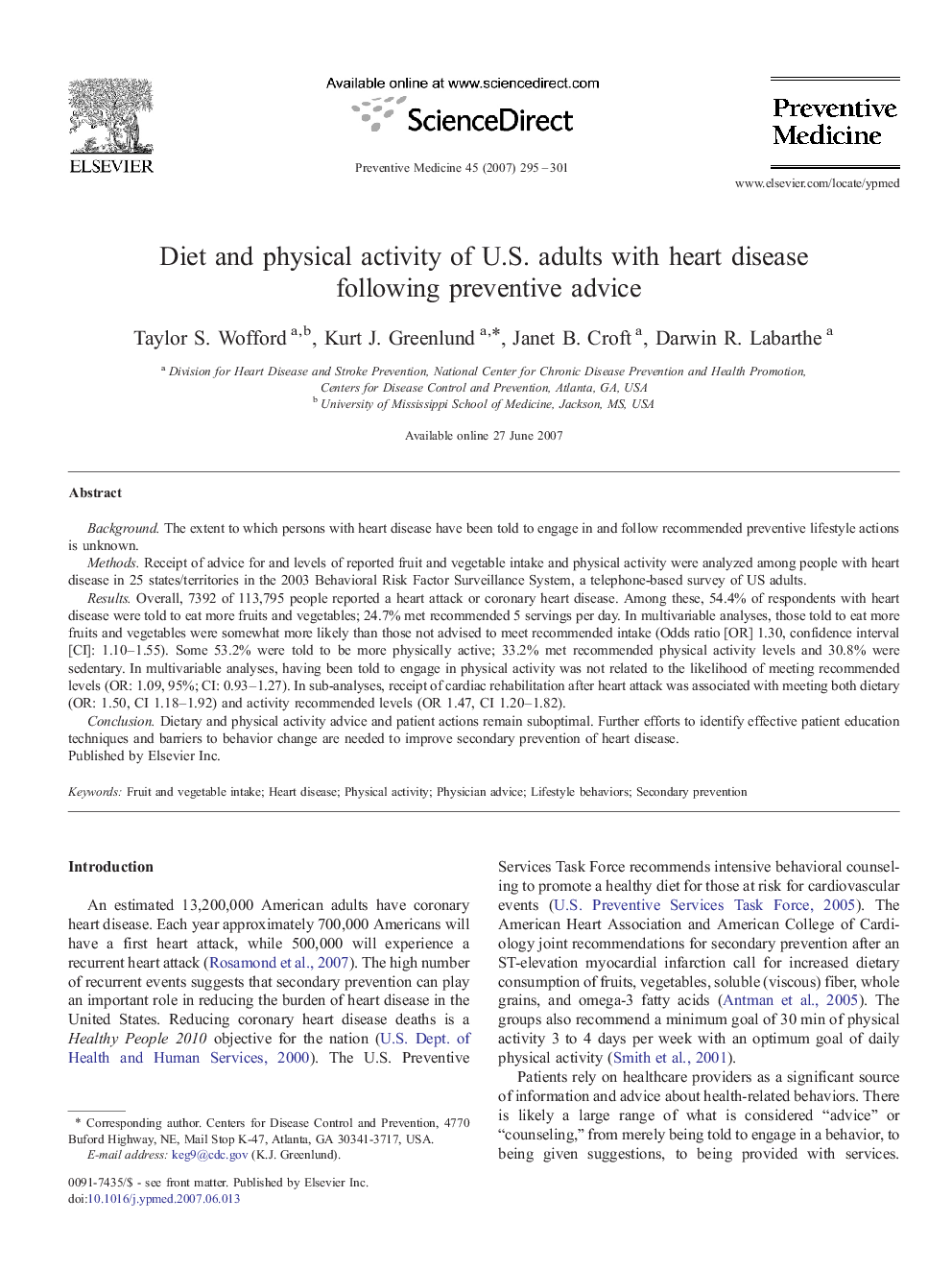| Article ID | Journal | Published Year | Pages | File Type |
|---|---|---|---|---|
| 3101897 | Preventive Medicine | 2007 | 7 Pages |
Background.The extent to which persons with heart disease have been told to engage in and follow recommended preventive lifestyle actions is unknown.Methods.Receipt of advice for and levels of reported fruit and vegetable intake and physical activity were analyzed among people with heart disease in 25 states/territories in the 2003 Behavioral Risk Factor Surveillance System, a telephone-based survey of US adults.Results.Overall, 7392 of 113,795 people reported a heart attack or coronary heart disease. Among these, 54.4% of respondents with heart disease were told to eat more fruits and vegetables; 24.7% met recommended 5 servings per day. In multivariable analyses, those told to eat more fruits and vegetables were somewhat more likely than those not advised to meet recommended intake (Odds ratio [OR] 1.30, confidence interval [CI]: 1.10–1.55). Some 53.2% were told to be more physically active; 33.2% met recommended physical activity levels and 30.8% were sedentary. In multivariable analyses, having been told to engage in physical activity was not related to the likelihood of meeting recommended levels (OR: 1.09, 95%; CI: 0.93–1.27). In sub-analyses, receipt of cardiac rehabilitation after heart attack was associated with meeting both dietary (OR: 1.50, CI 1.18–1.92) and activity recommended levels (OR 1.47, CI 1.20–1.82).Conclusion.Dietary and physical activity advice and patient actions remain suboptimal. Further efforts to identify effective patient education techniques and barriers to behavior change are needed to improve secondary prevention of heart disease.
